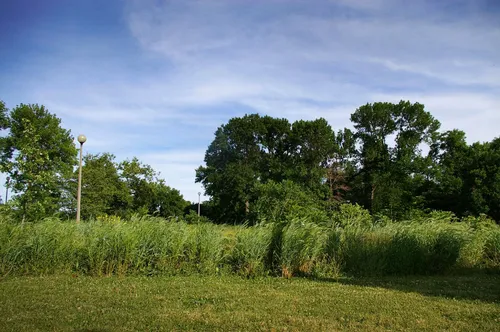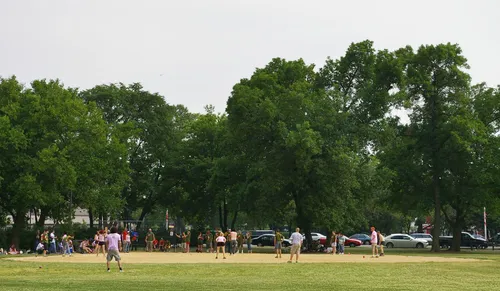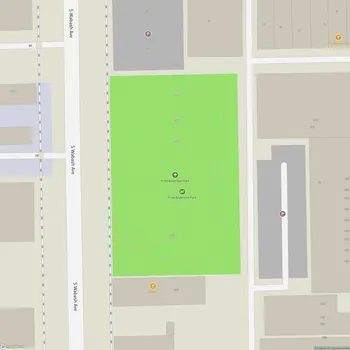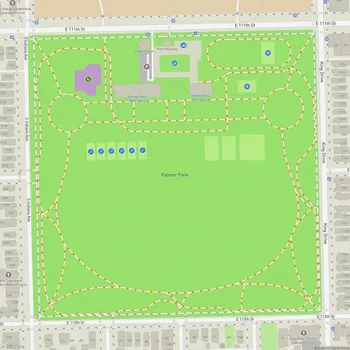Humboldt Park
Interactive Park Map
About Humboldt Park
A Historic Chicago Oasis
Tucked into Chicago's West Side, Humboldt Park covers 207 acres of green space rich with history, beautiful architecture, and cultural significance. Named after Alexander von Humboldt (a German naturalist who probably never expected to have such a cool Chicago park bearing his name), this urban sanctuary has been the neighborhood's beating heart since 1869.
The park owes its beautiful layout to visionary landscape architects William Le Baron Jenney and Jens Jensen, who created this special blend of natural prairie-style landscapes alongside more structured formal gardens and eye-catching architectural elements.
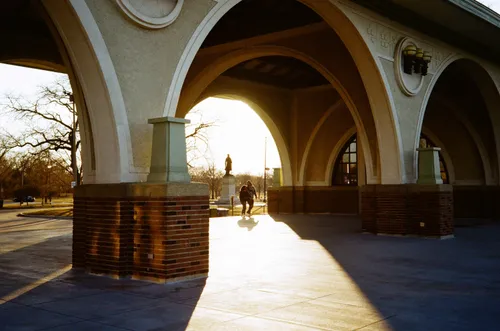
Natural Features
One of the first things you'll notice here are the peaceful interconnected lagoons and prairie river winding through the grounds. The park has the city's only inland beach, which recently reopened - a convenient option for locals looking to escape Chicago's summer heat without trekking to Lake Michigan.
Take some time to wander through the Jens Jensen Formal Garden, where native plants and seasonal flowers thrive in a thoughtfully designed sunken garden that somehow manages to feel like a world apart from the surrounding city.
The historic boathouse and refectory have been reimagined as cultural venues, adding even more life to the park. If you're visiting during warmer months, don't miss the chance to rent swan boats and paddle around the lagoons, where you might spot turtles sunning themselves or birds hunting for their next meal.
Cultural Landmarks
A true highlight within the park is the National Museum of Puerto Rican Arts and Culture, housed in gorgeously restored late-19th-century stables. This isn't just any museum - it functions as a cultural anchor for the community, showcasing exhibitions that celebrate Puerto Rican heritage all year long.
As you explore, you'll encounter meaningful monuments including statues of Alexander von Humboldt, Fritz Reuter, and the striking Puerto Rican Flag monument. For those wanting to dig deeper into the stories behind these landmarks, there's a self-guided audio tour that brings their historical significance to life.

Recreation and Community
Whether you're looking to break a sweat or just enjoy some fresh air, Humboldt Park offers baseball fields, soccer pitches, tennis courts, basketball courts, volleyball nets, playgrounds, and scenic walking paths. Young baseball fans might get a kick out of the Little Cubs Field - an adorable mini replica of Wrigley Field right in the park.
Year-round, the park transforms for community celebrations like the vibrant Puerto Rican Festival, chill jazz performances, and magical lantern festivals. If you're visiting on weekends or during events, you'll likely find food trucks serving up diverse options, including authentic Puerto Rican cuisine that's worth every calorie.
Wildlife and Nature
You might be surprised by how much wildlife thrives in this urban setting. The lagoons and prairie areas provide habitat for wood ducks, great blue herons, black-crowned night herons, painted turtles, and red-eared sliders. Plant enthusiasts will appreciate native species like wild geranium, yellow and purple iris, milkweed, and delicate red columbine dotting the landscape.
For the best wildlife viewing, hit the trails early morning when the park is quieter and the animals are more active. Bring your camera - the diverse ecosystem makes Humboldt Park a nice spot for urban nature photography without leaving city limits.
All Features & Facilities
Active Recreation
Nature & Wildlife
Water Features & Activities
Visitor Services
Food & Gathering
Photo Gallery (click to enlarge)
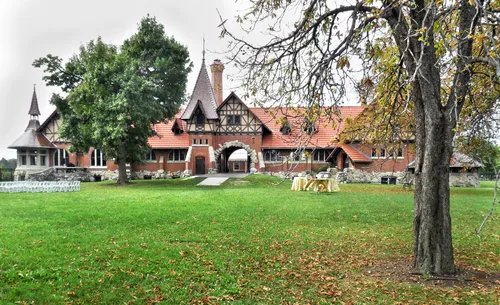


ParkMagnet Score
Top Park
Park Size
Opening Hours
Weather
Top Restaurants Near Humboldt Park
ArePA George
171 feet1552 N Kedzie Ave, Chicago, IL 60651
Casual Colombian restaurant serving authentic dishes like arepas, empanadas, and traditional platters in a cozy atmosphere.
Aztec Dave's Cantina
240 feet1143 N California Ave, Chicago, IL 60622
A vibrant Mexican cantina featuring authentic dishes like birria, tacos, and pozole with creative cocktails.
1492 Cuban Fusion Café
0.2 miles2615 W North Ave, Chicago, IL 60647
Cuban fusion restaurant serving traditional dishes, sandwiches, and breakfast in a relaxed, welcoming atmosphere.
Bàrbaro Taqueria
0.3 miles2525 W North Ave, Chicago, IL 60647
Relaxed Mexican taqueria serving authentic tacos and classic dishes alongside creative cocktails and margaritas.
Papa's Cache Sabroso
0.3 miles2517 W Division St, Chicago, IL 60622
Cozy BYOB spot specializing in authentic Puerto Rican cuisine with signature jibarito sandwiches and traditional dishes.
Bulerias Tapas Humboldt Park WOW District
0.4 miles2507 W North Ave Main Floor, Chicago, IL 60647
Spanish tapas restaurant serving authentic dishes like paella, empanadas, and grilled octopus with distinctive flavors.
